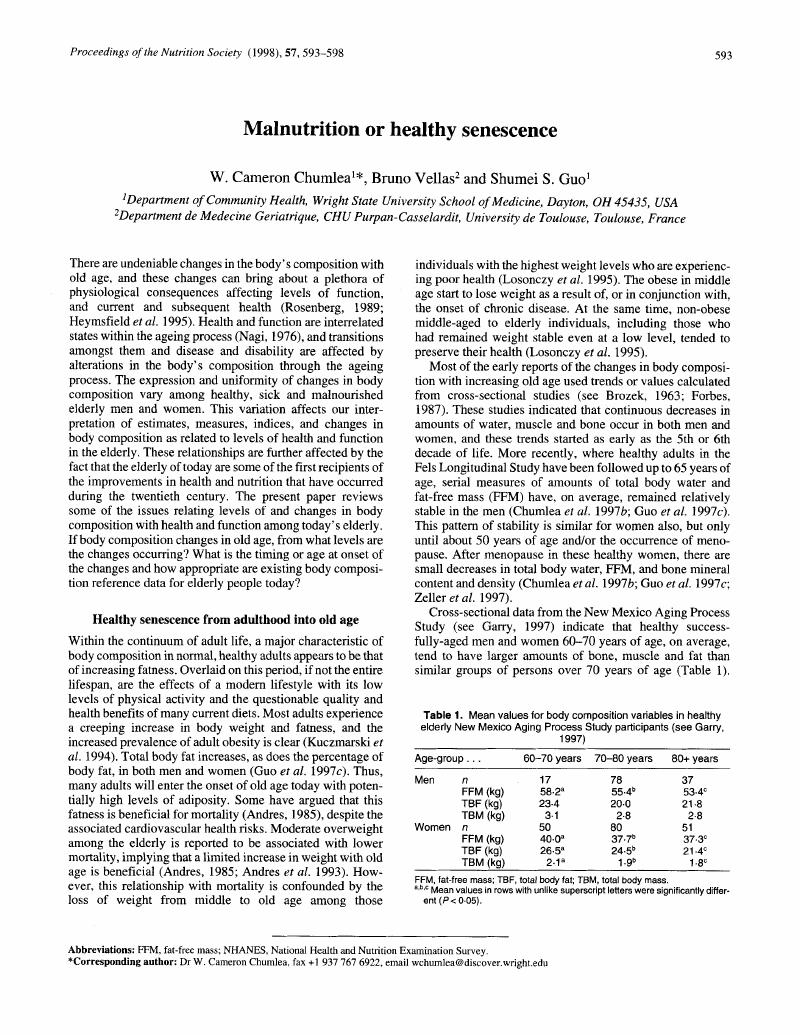Crossref Citations
This article has been cited by the following publications. This list is generated based on data provided by Crossref.
Kyle, Ursula G.
Genton, Laurence
Hans, Didier
Karsegard, Veronique L.
Michel, Jean‐Pierre
Slosman, Daniel O.
and
Pichard, Claude
2001.
Total Body Mass, Fat Mass, Fat‐Free Mass, and Skeletal Muscle in Older People: Cross‐Sectional Differences in 60‐Year‐Old Persons.
Journal of the American Geriatrics Society,
Vol. 49,
Issue. 12,
p.
1633.
Donnelly, Judith K.
2001.
Food and Nutritional Supplements.
p.
29.
Kyle, Ursula G
Genton, Laurence
Slosman, Daniel O
and
Pichard, Claude
2001.
Fat-free and fat mass percentiles in 5225 healthy subjects aged 15 to 98 years.
Nutrition,
Vol. 17,
Issue. 7-8,
p.
534.
Kyle, Ursula G.
Genton, Laurence
Hans, Didier
Karsegard, Veronique L.
Michel, Jean-Pierre
Slosman, Daniel O.
and
Pichard, Claude
2001.
Total Body Mass, Fat Mass, Fat-Free Mass, and Skeletal Muscle in Older People: Cross-Sectional Differences in 60-Year-Old Persons.
Journal of the American Geriatrics Society,
Vol. 49,
Issue. 12,
p.
1633.
Kyle, UG
Genton, L
Hans, D
Karsegard, L
Slosman, DO
and
Pichard, C
2001.
Age-related differences in fat-free mass, skeletal muscle, body cell mass and fat mass between 18 and 94 years.
European Journal of Clinical Nutrition,
Vol. 55,
Issue. 8,
p.
663.
Chumlea, WC
Guo, SS
Kuczmarski, RJ
Flegal, KM
Johnson, CL
Heymsfield, SB
Lukaski, HC
Friedl, K
and
Hubbard, VS
2002.
Body composition estimates from NHANES III bioelectrical impedance data.
International Journal of Obesity,
Vol. 26,
Issue. 12,
p.
1596.
DiMaria-Ghalili, Rose Ann
2002.
Changes in Nutritional Status and Postoperative Outcomes in Elderly CABG Patients.
Biological Research For Nursing,
Vol. 4,
Issue. 2,
p.
73.
Snodgrass, J. Josh
Leonard, William R.
Tarskaia, Larissa A.
Alekseev, Vasili P.
and
Krivoshapkin, Vadim G.
2005.
Basal metabolic rate in the Yakut (Sakha) of Siberia.
American Journal of Human Biology,
Vol. 17,
Issue. 2,
p.
155.
Lebrun, Corinne E. I.
van der Schouw, Yvonne T.
de Jong, Frank H.
Grobbee, Diederick E.
and
Lamberts, Steven W.
2006.
Fat mass rather than muscle strength is the major determinant of physical function and disability in postmenopausal women younger than 75 years of age.
Menopause,
Vol. 13,
Issue. 3,
p.
474.
Raman, Aarthi
Ramsey, Jon J.
Kemnitz, Joseph W.
Baum, Scott T.
Newton, Wendy
Colman, Ricki J.
Weindruch, Richard
Beasley, Mark T.
and
Schoeller, Dale A.
2007.
Influences of calorie restriction and age on energy expenditure in the rhesus monkey.
American Journal of Physiology-Endocrinology and Metabolism,
Vol. 292,
Issue. 1,
p.
E101.
Coin, Alessandra
Sergi, Giuseppe
Minicuci, Nadia
Giannini, Sandro
Barbiero, Elisa
Manzato, Enzo
Pedrazzoni, Mario
Minisola, Salvatore
Rossini, Maurizio
Del Puente, Antonio
Zamboni, Mauro
Inelmen, Eminé Meral
and
Enzi, Giuliano
2008.
Fat-free mass and fat mass reference values by dual-energy X-ray absorptiometry (DEXA) in a 20–80 year-old Italian population.
Clinical Nutrition,
Vol. 27,
Issue. 1,
p.
87.
Johnson, C. Shanthi
and
Sacks, Gordon
2010.
Brocklehurst's Textbook of Geriatric Medicine and Gerontology.
p.
678.



